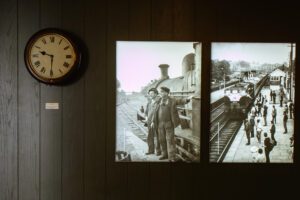History of Irish Rail

The introduction of the railways into Ireland in the 19th century brought a new and exciting way of transporting people and freight around the country.
The first public commuter railway system in Ireland launched in 1834 and ran between Dublin and Kingstown, now Dún Laoghaire. In the following decades the rail lines spread from Dublin, initially reaching out to Cork, Belfast and Galway, and then to smaller towns and villages.
Unlike many European countries, there was no overall plan to develop a rail system for Ireland, which led to disputes and confusion. An economic collapse in the late 1830s and the Great Famine slowed railway growth for several years. In 1848 there were only 360 miles of track, however this had extended to approx. 3,750 miles by 1920.
After the partition of the Republic of Ireland and Northern Ireland in 1921, The Irish Civil War created many problems for the railways. Tracks, bridges and signal cabins were blown up and destroyed in many parts of the country, and rail staff forced to carry out tasks at gunpoint. In January 1925 the majority of the railway companies in the Republic were brought together to form one company, the Great Southern Railways (GSR).
Throughout the 1930s – 1940s both the road system and the transport using it had improved greatly. In 1905 approx. 840 cars had been registered in Ireland but by 1914 this had increased to almost 11,000 vehicles. This took a lot of passengers and freight from the railways. The second half of the 20th century saw further decline but the last 20 years have seen some regeneration and growth of Irish railways.